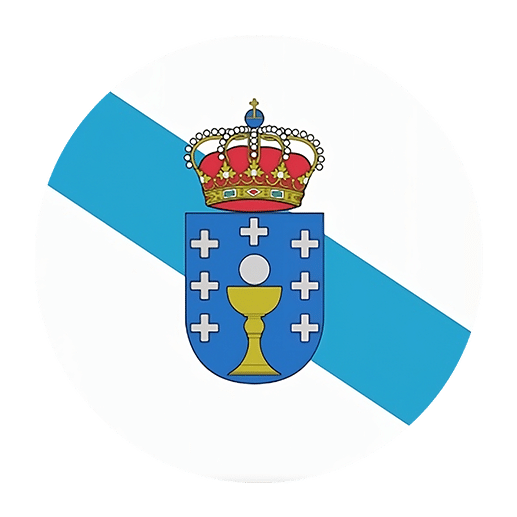Galician, a language spoken in the northwestern region of Spain, is a beautiful and rich language that has its own set of grammatical rules and nuances. One of the fundamental aspects of mastering any language is understanding how to use nouns correctly, particularly in their singular and plural forms. This article will provide a comprehensive guide to Galician nouns, focusing on their singular and plural forms, to help English speakers gain a better grasp of this essential linguistic feature.
Introduction to Galician Nouns
Nouns in Galician, as in English, are words that name people, places, things, or ideas. Understanding how to form and use singular and plural nouns in Galician is crucial for effective communication. In Galician, nouns have gender (masculine or feminine) and number (singular or plural). The rules for changing a noun from singular to plural are relatively straightforward but do require some attention to detail. This article will break down these rules and provide examples to ensure clarity.
Gender of Nouns
Before diving into pluralization, it’s important to understand the concept of gender in Galician nouns. Every noun in Galician is either masculine or feminine. Generally, nouns ending in -o are masculine, and those ending in -a are feminine. However, there are exceptions and additional endings that you need to be aware of:
– Masculine endings: -o, -or, -an, -en, -ín
– Feminine endings: -a, -ora, -ona, -ina
For example:
– O libro (the book) – masculine
– A casa (the house) – feminine
Forming the Plural of Galician Nouns
Just like in English, forming the plural of Galician nouns involves modifying the singular form, usually by adding a suffix. The general rules for forming plural nouns in Galician are as follows:
1. Nouns Ending in a Vowel
For nouns that end in a vowel (a, e, o), you simply add -s to the end of the noun to form the plural.
Examples:
– O gato (the cat) → Os gatos (the cats)
– A mesa (the table) → As mesas (the tables)
– O coche (the car) → Os coches (the cars)
2. Nouns Ending in a Consonant
For nouns ending in a consonant, you add -es to form the plural.
Examples:
– O animal (the animal) → Os animais (the animals)
– A flor (the flower) → As flores (the flowers)
– O papel (the paper) → Os papeis (the papers)
3. Nouns Ending in -s
For nouns that end in -s, if the stress is on the last syllable, you add -es. If the stress is not on the last syllable, the noun remains unchanged in the plural form.
Examples:
– O país (the country) → Os países (the countries)
– O virus (the virus) → Os virus (the viruses) (no change because the stress is not on the last syllable)
4. Nouns Ending in -z
For nouns ending in -z, you change the -z to -ces to form the plural.
Examples:
– O lápiz (the pencil) → Os lápices (the pencils)
– A vez (the time/occasion) → As veces (the times/occasions)
5. Nouns Ending in -n
For nouns ending in -n, you add -es and place an accent mark on the preceding vowel if it is not already accented.
Examples:
– O capitán (the captain) → Os capitáns (the captains)
– A canción (the song) → As cancións (the songs)
6. Irregular Plurals
Just like in English, there are some irregular plural forms in Galician that do not follow the standard rules. These need to be memorized individually.
Examples:
– O boi (the ox) → Os bois (the oxen)
– A man (the hand) → As mans (the hands)
Practice and Usage
Understanding the rules is one thing, but applying them correctly in conversation and writing is another. Practice is key to mastering the plural forms of Galician nouns. Here are a few tips to help you practice and internalize these rules:
1. Read and Listen
Immerse yourself in the language by reading Galician texts and listening to Galician speakers. Pay attention to how nouns are used in both singular and plural forms. This will help you get a feel for the language and how these rules are applied in real contexts.
2. Write and Speak
Practice writing sentences using both singular and plural nouns. Try to incorporate a variety of nouns to cover different endings and rules. Additionally, practice speaking by having conversations with native speakers or language partners. This will help reinforce your learning and improve your confidence.
3. Use Flashcards
Create flashcards with singular nouns on one side and their plural forms on the other. Test yourself regularly to reinforce your memory of these forms.
4. Engage with Native Speakers
Engage in conversations with native Galician speakers. This will not only help you practice noun forms but also improve your overall fluency and understanding of the language.
5. Language Apps and Resources
Utilize language learning apps and online resources that offer exercises and quizzes on Galician grammar. These tools can provide additional practice and reinforce your learning.
Common Mistakes to Avoid
As with learning any new language, there are common mistakes that learners might make when forming plural nouns in Galician. Being aware of these can help you avoid them:
1. Confusing Masculine and Feminine Endings
Pay attention to the gender of nouns and ensure you are using the correct endings. For instance, don’t confuse o gato (the cat, masculine) with a gata (the cat, feminine).
2. Misplacing Accent Marks
When forming plurals, especially for nouns ending in -n, be careful with accent marks. Incorrect placement can change the meaning or make the word incorrect.
3. Overgeneralizing Rules
While most pluralization rules are straightforward, be cautious with irregular nouns and exceptions. Overgeneralizing rules can lead to mistakes.
Conclusion
Mastering the singular and plural forms of Galician nouns is a crucial step in becoming proficient in the language. By understanding the rules and practicing regularly, you can improve your ability to communicate effectively in Galician. Remember that language learning is a journey, and making mistakes is part of the process. With dedication and practice, you’ll find yourself becoming more comfortable and confident with Galician nouns.
Whether you’re a beginner or looking to refine your skills, this guide provides a solid foundation for understanding and using singular and plural nouns in Galician. Happy learning!

